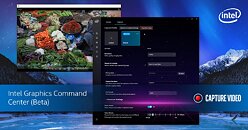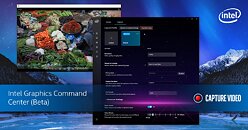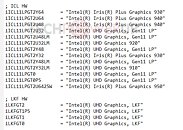
A Peek Under the Hood of Intel IGCC Game Capture (beta) Feature
Late last week, Intel released a public beta of its own low-'cost' game capture and streaming feature that's part of Intel Graphics Command Center (IGCC) application that's distributed through Microsoft Store. At the time, Intel claimed that those gaming on Intel Graphics can yet record or stream their games with negligible performance impact. We now have a couple of under the hood details on how this feature works. The Game Capture and Streaming feature lets people record their gameplay or stream it to popular social networks such as Twitch, YouTube, etc.
Intel's game capture and streaming feature leverages the VDEnc hardware AVC encoder featured in the company's Gen9 (and later) iGPUs, found on "Skylake" (or later) microarchitectures. At default quality settings, the feature only needs VDEnc, and hence offers practically zero iGPU performance impact when rendering 3D. At higher quality settings by the user, however, the feature switches to a dual-pipe encoder that taps into the compute power of the iGPU's execution units (EUs). These hence come with a performance impact on the iGPU when rendering 3D. We've also learned that IGCC game capture tech does not leverage discrete GPUs of other brands.
Intel's game capture and streaming feature leverages the VDEnc hardware AVC encoder featured in the company's Gen9 (and later) iGPUs, found on "Skylake" (or later) microarchitectures. At default quality settings, the feature only needs VDEnc, and hence offers practically zero iGPU performance impact when rendering 3D. At higher quality settings by the user, however, the feature switches to a dual-pipe encoder that taps into the compute power of the iGPU's execution units (EUs). These hence come with a performance impact on the iGPU when rendering 3D. We've also learned that IGCC game capture tech does not leverage discrete GPUs of other brands.









